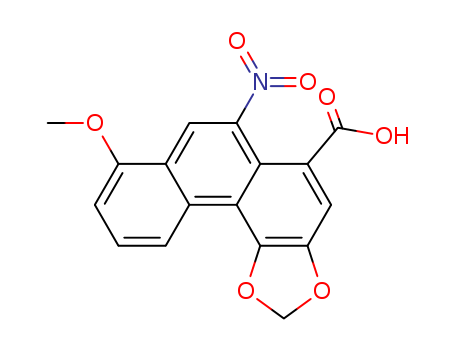- Chemical Name:Aristolochic acid
- CAS No.:313-67-7
- Deprecated CAS:61117-05-3,12770-90-0,1414787-57-7
- Molecular Formula:C17H11NO7
- Molecular Weight:341.277
- Hs Code.:29329990
- European Community (EC) Number:206-238-3
- NSC Number:50413,11926
- UNII:94218WFP5T
- DSSTox Substance ID:DTXSID0040969
- Nikkaji Number:J20.596F
- Wikipedia:Aristolochic_acid
- Wikidata:Q21099362
- Metabolomics Workbench ID:52975
- ChEMBL ID:CHEMBL93353
- Mol file:313-67-7.mol
Synonyms:8-methoxy-6-nitrophenanthro(3,4-d)-1,3-dioxole-5-carboxylic acid;aristolochic acid;aristolochic acid A;aristolochic acid I;aristolochic acid I, sodium salt;sodium aristolochate;Tardolyt



 T
T


